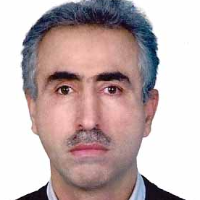Fault Control on Copper Depositsin the Sar Cheshmeh Area Indicated by Remote Sensing & Geographic Information Systems (GIS)
Author(s):
Abstract:
Introduction
The Sar Cheshmeh copper deposit and indications of other deposits are located in the Dehaj-Sarduieh belt in the Kerman region (Khadem and Nedimovic, 1973). This belt is one of the most important provinces of Cu mineralization in Iran, with approximately 300 Cu deposits and prospects, includingtwenty of the porphyry copper type (Ghorbani, 2013). This belt, 300 km in length and 3045 km width, is situated in the southern part of the Uramia-Dokhtar volcanic belt in central Iran (Shafiei, 2010). Zarasvandi (2004) has proposed that faulting has played a role in the location of copper deposition in this area.Methods of Investigation: In order to check Zarasvandis hypothesis, the spatial relationship between faults and Cu deposits was investigated using remote sensing and GIS techniques together with field investigations in the Sar Cheshmeh area. The the following steps were used in this research: 1. Review of available data
2. Surface geology field studies
3. Preparation of digital overlay of Copper occurrences
4. Analysis of the relationshipof faulting to Copper occurrences
Using remote sensing techniques, a geometrically corrected satellite image was filtered with high pass and Sharpen Edge filters to detect possible lineaments (Lillesand and Keifer, 2008; Sabins, 1996). Directional filters (45º, 90º, 135º and 180º) were then applied to the processed image to enhance the linear structures. Subsequently,the major lineaments were documented in the field as major and minor faults (Safari et al., 2011). Four main faults, designated as the Rafsanjan, Mani, Gaud-e-Ahmar and Sar Cheshmeh faultswere determined to be major. These faults were digitized and overlaid on other data layers in GIS environment. The strikes, dips, striae and directions of movementof the faultswere measured at 20 locations in the field. Structural analyses were done with Rose diagrams, calculation of P-axes and preparation of a structural map.
Copper occurrences on the mineral distribution map of Lotfi, et al. (1993) were used in this study and the locations of somecopper occurrences were determined in the field using GPS. The locations and main characteristics of the copper occurrences were entered into a GIS map. Finally, aniso-fracture map, was prepared using the GIS environment based onfault lengths within a 1000 ×1000 mgrid and on the buffer map of ore occurrences relative to faults. The copper occurrence locations were overlaid on these prepared maps and the relationship between faults and ore occurrences locations was analyzed.
Results
This research indicates that: 1.The faults in the Sar Cheshmeh area trend predominantly 090°-110°, 130°-150°, 050°-070° and 170°-190°.2.The data show that three major NW- trendingfaults, the Mani, Gaud-e-Ahmar and Rafsanjan faults show right-lateral strike-slip movement and the two major E-W trending Sar Cheshmeh and Darreh Zar faults have left-lateral strike-slip displacements.
3. The control of the calculated P-axes shows that at least two older movements have happened along these faults.
Discussion
The results show that the main faults did not directly control the locations of the mineralized porphyries and veins, but that rather the locations are due tothe second-order faults. Also, the saturated occurrence locations have the closer relationship with main faults and most indexes are located near the Rafsanjan fault and its second-order faults.Keywords:
Language:
Persian
Published:
Journal of Economic Geology, Volume:8 Issue: 1, 2016
Pages:
79 to 92
magiran.com/p1572845
دانلود و مطالعه متن این مقاله با یکی از روشهای زیر امکان پذیر است:
اشتراک شخصی
با عضویت و پرداخت آنلاین حق اشتراک یکساله به مبلغ 1,390,000ريال میتوانید 70 عنوان مطلب دانلود کنید!
اشتراک سازمانی
به کتابخانه دانشگاه یا محل کار خود پیشنهاد کنید تا اشتراک سازمانی این پایگاه را برای دسترسی نامحدود همه کاربران به متن مطالب تهیه نمایند!
توجه!
- حق عضویت دریافتی صرف حمایت از نشریات عضو و نگهداری، تکمیل و توسعه مگیران میشود.
- پرداخت حق اشتراک و دانلود مقالات اجازه بازنشر آن در سایر رسانههای چاپی و دیجیتال را به کاربر نمیدهد.
دسترسی سراسری کاربران دانشگاه پیام نور!
اعضای هیئت علمی و دانشجویان دانشگاه پیام نور در سراسر کشور، در صورت ثبت نام با ایمیل دانشگاهی، تا پایان فروردین ماه 1403 به مقالات سایت دسترسی خواهند داشت!
In order to view content subscription is required
Personal subscription
Subscribe magiran.com for 70 € euros via PayPal and download 70 articles during a year.
Organization subscription
Please contact us to subscribe your university or library for unlimited access!



